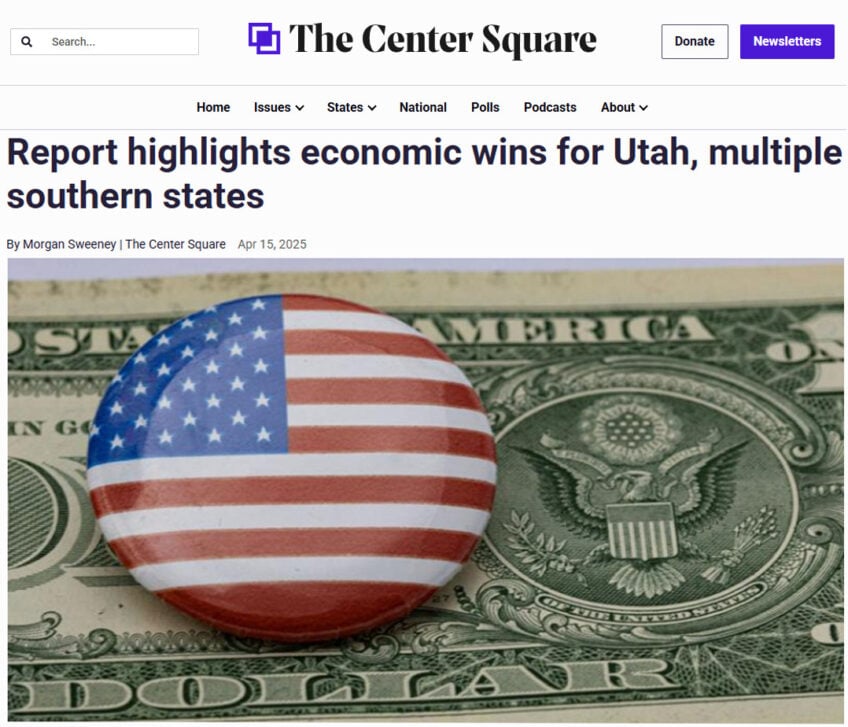Report Highlights Economic Wins for Utah, Multiple Southern States: ALEC in The Center Square
Big moves in Louisiana and West Virginia as Arkansas advances in the premier annual ranking of state economic outlook for the coming year.
In coverage of the launch of the 18th edition of Rich States, Poor States: ALEC-Laffer State Economic Competitiveness Index, reporter Morgan Sweeney spotlighted national economic trends, New York’s ongoing decline, and Utah’s continued dominance as the state with the best economic outlook for 2025.
Utah ranked first for economic outlook for the 18th year in a row, according to the annual Rich States, Poor States report, but also noteworthy are the positive findings for Louisiana, Tennessee, West Virginia and Arkansas.
The American Legislative Exchange Council’s yearly report has a backward- and forward-looking component. It ranks states for their economic performance from 2013-2023 based on three indicators, as well as ranking them for their economic outlook based on the status of 15 economic policies set mostly at the state level.
To assess states’ economic performance, the report’s authors look at the state’s cumulative gross domestic product, non-farm payroll employment and absolute domestic migration over a 10-year period. Absolute domestic migration measures the total number of people who have moved to a state against the total number who have left the state in a given period of time.
“When you look at broad economic performance indicators, they’re three of the most-cited,” ALEC President and Chief Economist Jonathan Williams told The Center Square. “Of the three of those factors, I think by far the most important one for policy makers to look at is the net domestic migration figure: Is the state growing or is it shedding people?”
Reagan economist Arthur Laffer is one of those authors, known for supply-side economics and the Laffer Curve. He also popularized the idea that people “vote with their feet,” implying that a state’s economic health, including its tax policies, often plays a big role in Americans’ decisions to leave a given state and move to another.

